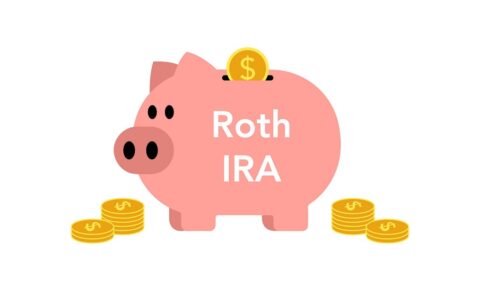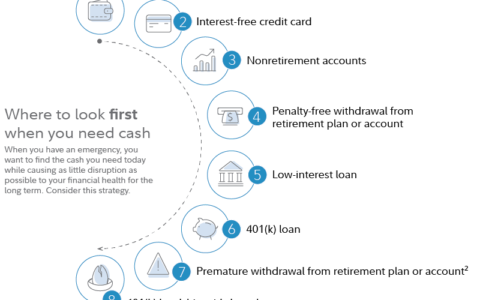
Introduction to Roth IRA
A Roth IRA is an individual retirement account that offers tax-free growth and tax-free withdrawals in retirement. Contributions to a Roth IRA are made with after-tax dollars, which means you have already paid taxes on the money you contribute. This makes Roth IRAs different from traditional IRAs, which are funded with pre-tax dollars.
The benefits of a Roth IRA are that your money can grow tax-free and you can take tax-free withdrawals in retirement. This makes them an attractive option for anyone looking to save for retirement. There are no income limits for contributing to a Roth IRA, so anyone can open one.
There are a few things to keep in mind when considering a Roth IRA. First, contributions can only be made with after-tax dollars, so you will need to have some taxable income in order to contribute. Second, there are contribution limits for Roth IRAs. For 2020, the contribution limit is $6,000 ($7,000 if you’re 50 or older). Lastly, withdrawals from a Roth IRA are taxed as ordinary income, so it’s important to consider how this will impact your taxes in retirement.
If you’re looking for a way to save for retirement that offers tax-free growth and tax-free withdrawals in retirement, a Roth IRA may be right for you.
Roth IRA eligibility requirements
To be eligible to contribute to a Roth IRA, you must have earned income from a job or business. This includes income from part-time work, self-employment, alimony, and even rental property income. If you’re married and file taxes separately, you must also have earned income to contribute.
The amount you can contribute to a Roth IRA each year is capped at $6,000 (for 2020), or $7,000 if you’re 50 or older. If your earned income is less than this amount, you can still contribute the full amount—you just can’t exceed it.
There are no age limits for contributing to a Roth IRA. You can continue to contribute as long as you have earned income. This makes the Roth IRA an excellent retirement savings option for young workers who may not yet be eligible for a traditional IRA or 401(k).
Select a Roth IRA Provider
A Roth IRA is a retirement savings account that allows you to save money on a tax-deferred basis. Contributions to a Roth IRA are not tax deductible, but earnings grow tax-free and can be withdrawn tax-free in retirement. There are many different Roth IRA providers to choose from, so it’s important to compare your options before selecting one.
When choosing a Roth IRA provider, there are several factors you should consider:
- Any fees to open or maintain an account.
- Customer service availability, whether online, by the telephone, or both.
- Types of investments available.
- Costs to trade.
- Front or back-end loads (sales charges)
- Management fees (if applicable)
- Performance history (if applicable)
Complete Documentation
When it comes to saving for retirement, a Roth IRA is one of the best options available. But what exactly is a Roth IRA, and how do you go about investing in one?
A Roth IRA is an individual retirement account that allows you to set aside after-tax money for retirement. That means you’ve already paid taxes on the money you contribute, and your withdrawals in retirement are tax-free.
There are a few different ways to go about investing in a Roth IRA. You can open one through a broker like Vanguard or Fidelity, or directly through a robo-advisor like Betterment.
Once you’ve opened your account, you’ll need to choose how to invest your money. For most people, a mix of stocks and bonds is the best option. But there are other choices as well, like real estate or peer-to-peer lending.
The important thing is to start contributing to your Roth IRA as soon as possible. The sooner you start saving, the more time your money has to grow. Just be sure to keep your contributions within the annual limit ($6,000 for 2022, $6,500 for 2023).
Now that you know all about Roth IRAs, it’s time to start saving for your own retirement!
Transfer Funds
There are a few different ways that you can transfer funds into a Roth IRA. One way is to roll over an existing retirement account, such as a 401(k) or traditional IRA, into a Roth IRA. This can be done by requesting a direct transfer from your current custodian to the new one, or by taking a distribution from your current account and contributing it to your Roth IRA within 60 days.
Another way to fund a Roth IRA is through annual contributions. You can contribute up to $6,000 per year ($7,000 if you’re age 50 or older), as long as your income doesn’t exceed certain limits. If your income is too high to make a direct contribution, you can still contribute indirectly by making what’s called a “backdoor” contribution. This involves making a contribution to a traditional IRA and then immediately converting it to a Roth IRA.
Finally, you may also be able to fund your Roth IRA through inherited assets. If you inherit an IRA from someone other than your spouse, you generally have the option of rolling it over into your own Roth IRA or taking distributions from the account.
No matter how you choose to fund your Roth IRA, remember that all contributions must be made in cash (i.e., no stocks, bonds, or other securities). Also keep in mind that there are annual deadlines for making contributions (April 15 for most people).
Select Investments
There are a few things to consider when selecting investments for your Roth IRA. First, you will want to decide what type of investment account you would like to open. There are many different types of investment accounts, each with their own set of rules and regulations. You will need to research the different types of accounts and decide which one is right for you.
Once you have decided what type of account you would like to open, you will need to select the investments that you would like to make. There are a variety of different investment options available, and it is important that you select the ones that best fit your goals and risk tolerance. You will also want to consider the fees associated with each investment option.
It is important to remember that you can always change your investment choices at any time. If your goals or risk tolerance changes, you can always adjust your investments accordingly.
Roth IRA Pros and Cons
Roth IRA accounts have a number of pros and cons that you should be aware of before deciding whether or not to invest in one. On the plus side, Roth IRAs offer a number of tax advantages that can help you grow your retirement savings. For example, contributions to a Roth IRA are made with after-tax dollars, which means they can be withdrawn tax-free in retirement. Additionally, earnings on your investment grow tax-deferred, meaning you won’t have to pay taxes on them until you withdraw the money in retirement.
On the downside, Roth IRAs have contribution limits that may prevent you from fully funding your account. For 2020, the contribution limit is $6,000 (or $7,000 if you’re 50 or older). Additionally, high-income earners may not be eligible to contribute to a Roth IRA at all. Finally, withdrawals made before age 59 1/2 are subject to taxes and a 10% penalty.
Overall, Roth IRAs can be a great way to save for retirement if you understand the pros and cons. Be sure to do your research and talk to a financial advisor before making any decisions.
Conclusion
Investing in a Roth IRA is an excellent way to save for retirement. It allows you to make tax-free withdrawals after age 59 ½ and provides additional protection from creditors, since the funds are not available until retirement. With its flexible contribution limits and range of investment options, a Roth IRA can be tailored to meet your individual investing goals. Before you start investing, however, make sure to research the different types of accounts available so that you can select one that best fits your needs and financial situation.
Author:Com21.com,This article is an original creation by Com21.com. If you wish to repost or share, please include an attribution to the source and provide a link to the original article.Post Link:https://www.com21.com/how-to-invest-in-a-roth-ira.html





